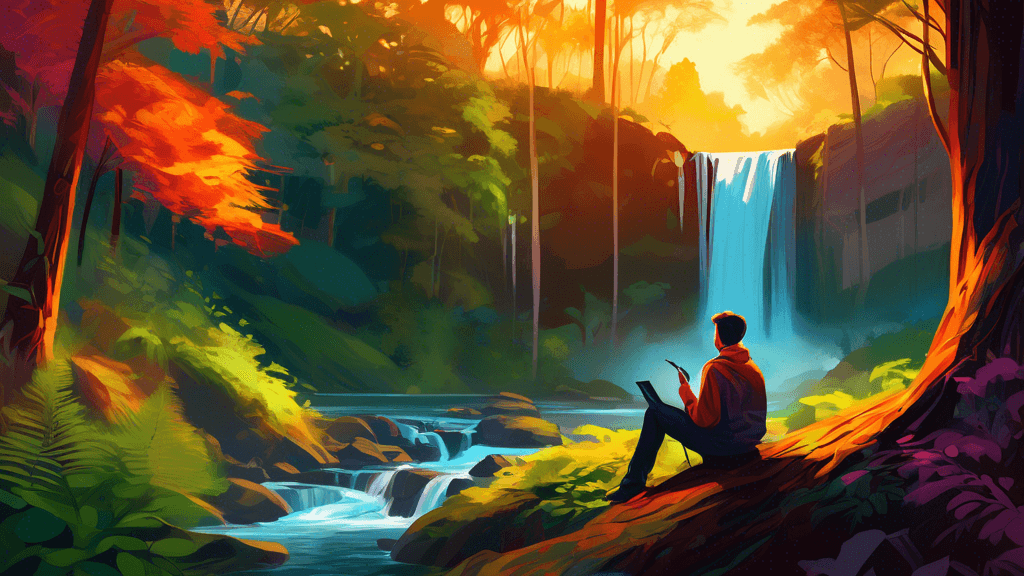
Mastering Landscape Photography: Beginner to Pro Tips with Stephen Milner
Share
Introduction to Landscape Photography
Landscape photography captures more than just snapshots of nature; it immortalizes the profound connection between the photographer and the environment. The journey from a beginner to a pro in this genre is not just about mastering the technical aspects but also about understanding the art of observing and interpreting nature's tableau.
Understanding the Basics: Starting Your Journey
Every professional starts as a beginner, and understanding the basic principles is the cornerstone of any successful photographer. The essential skills include learning about:
- Camera settings: Understanding how aperture, shutter speed, and ISO work together to create a balanced exposure is fundamental.
- Composition: The rule of thirds, leading lines, symmetry, and balance are key components that structure the aesthetics of your photograph.
- Lighting: Natural light varies greatly depending on the time of day and weather, which significantly affects the mood and tone of your landscape photos.
Choosing the Right Equipment
While the photographer's skill is paramount, having the right tools can greatly enhance the quality of your photos. Key equipment includes:
- A sturdy tripod: This is essential for stability, especially in varying terrains and windy conditions.
- Wide angle lens: Ideal for capturing expansive landscapes and ensuring that you can frame wide scenes effectively.
- Filters: ND filters for managing exposure in bright conditions and polarizing filters to enhance colors and reduce reflections are crucial.
Intermediate Techniques: Enhancing Your Craft
As you grow more comfortable with the basics, your focus should shift towards refining your technique and developing your unique style. This includes:
- Better understanding of light: Golden hours — just after sunrise and before sunset — offer soft, diffused light that can dramatically enhance your landscape images.
- Advanced composition techniques: Experiment with unconventional viewpoints and focal lengths to bring new perspectives to well-known scenes.
- Long exposure photography: Mastering this technique can allow you to create ethereal and captivating images of moving subjects like waterfalls and clouds.
Incorporating Weather and Seasons
Different weather conditions and seasons offer unique opportunities. Fog can add mystery to your scenes, snow can simplify compositions and reveal forms, and autumn brings a palette of warm colors that can transform familiar landscapes.
Learning from the Pros: Insights from Stephen Milner
Stephen Milner, an internationally recognized landscape photographer, emphasizes the importance of patience and observation in landscape photography. He notes, The landscape is like a book that needs to be read slowly and carefully. Only then can its stories unfold in front of your lens. Stephen’s work demonstrates that photography is not just about capturing what you see but also about conveying how the scene feels.
According to Stephen, essential tips for reaching a professional level include:
- Understanding the local environment: Researching the geography and climatic conditions can lead to more meaningful, informed compositions.
- Building an emotional connection: Connecting emotionally with the place makes your photographs more compelling and authentic.
- Persistent practice: Revisiting the same location in different conditions or seasons uncovers subtle beauties and offers a deeper understanding of the landscape.
Navigating the Path from Amateur to Professional
Transitioning from an enthusiastic amateur to a professional can additionally involve developing a portfolio, connecting with other photographers, and continually learning through workshops and tutorials. Sharing your work for feedback and pushing your creative boundaries are also key steps in this evolution.
Stephen Milner advises, Embrace every setback as a setup for a greater comeback. Every photo not taken is a lesson in how to see better.
Conclusion
Landscape photography is a fulfilling artistic pursuit that allows photographers to connect with the environment while capturing its magnificence. From mastering technical skills and developing an eye for composition to understanding the intricate dance of light and shadows, each step is a learning curve that brings its own rewards. With patience, persistence, and passion, anyone can make this journey—from capturing simple scenic views to producing awe-inspiring visual narratives.
Remember, every landscape has a story waiting to be told. Are you ready to tell it?





